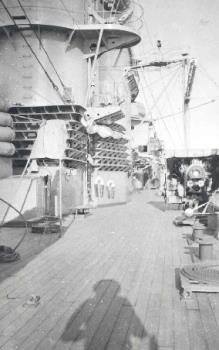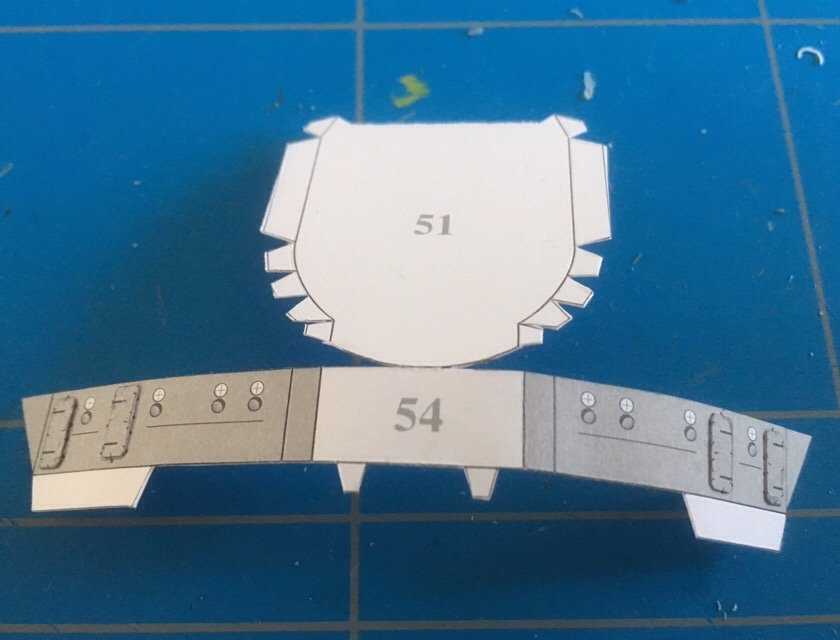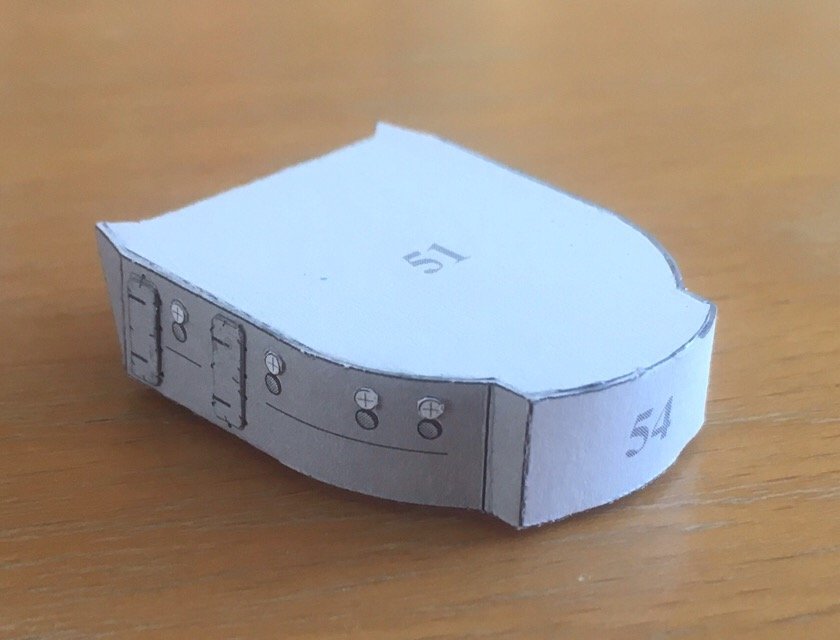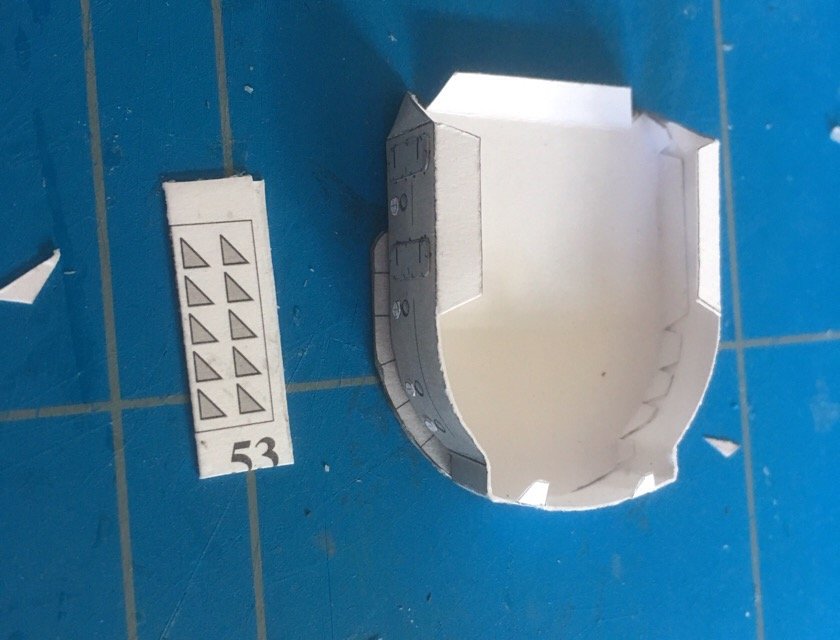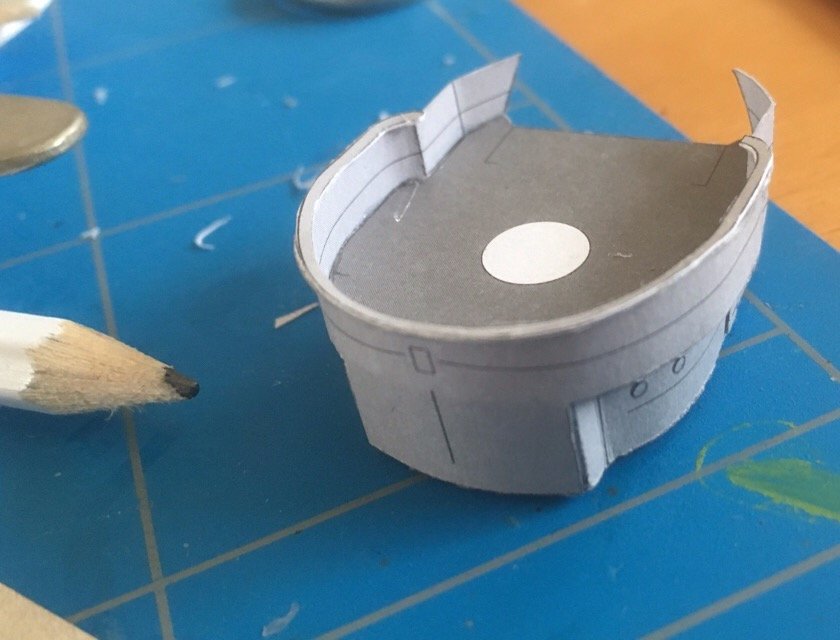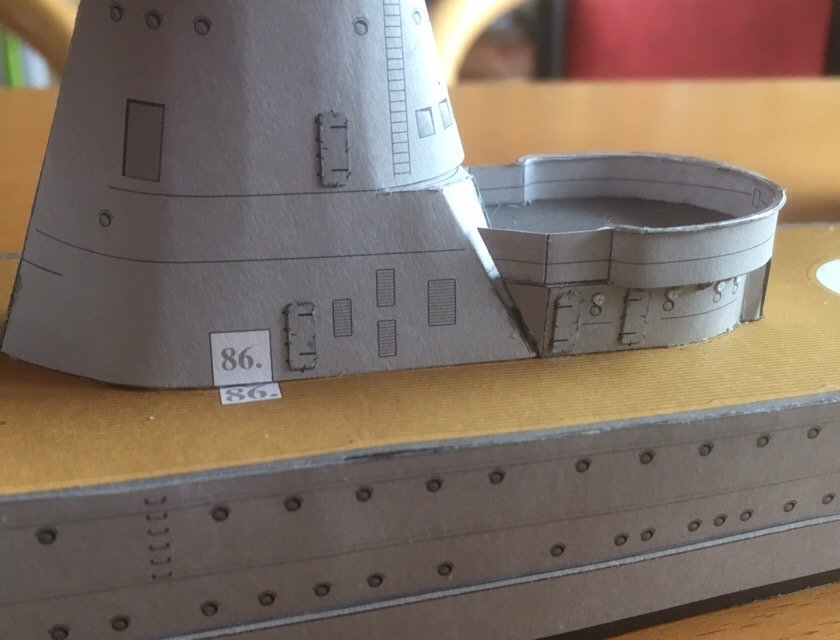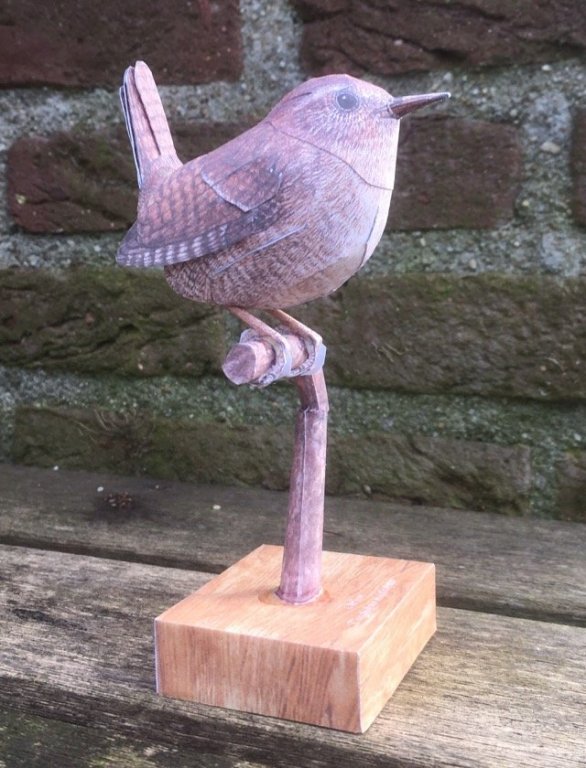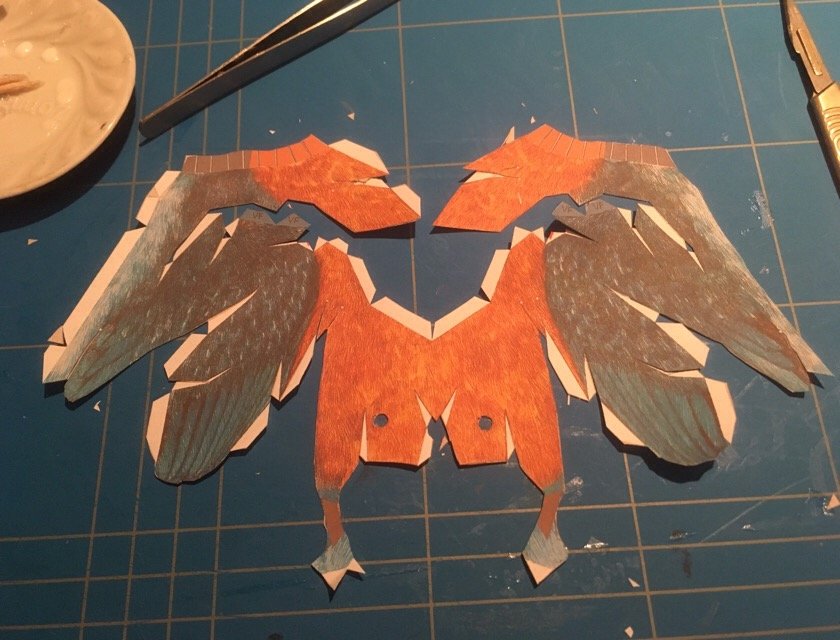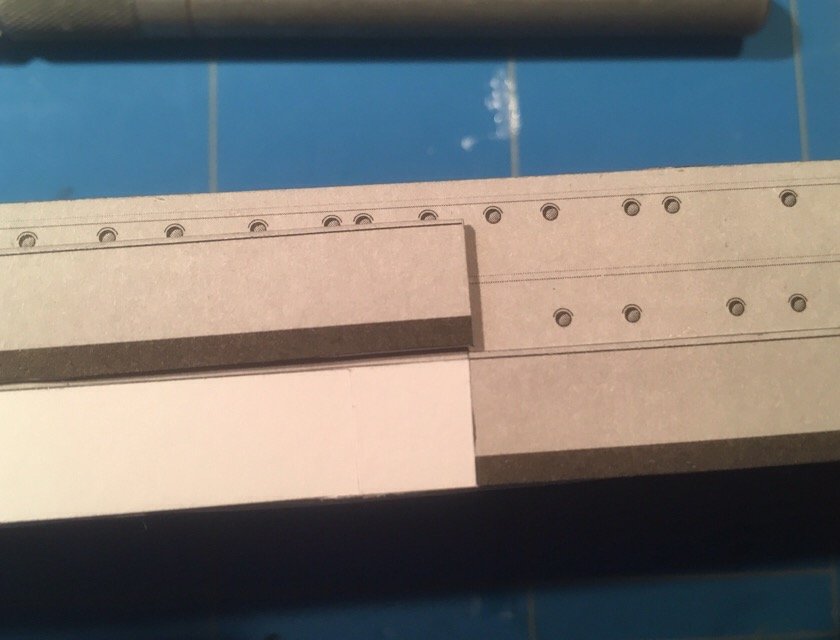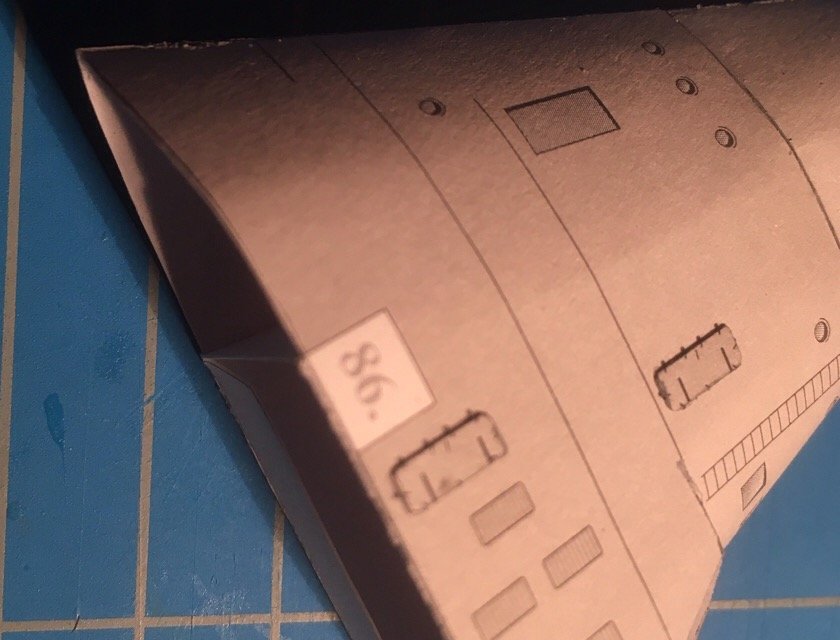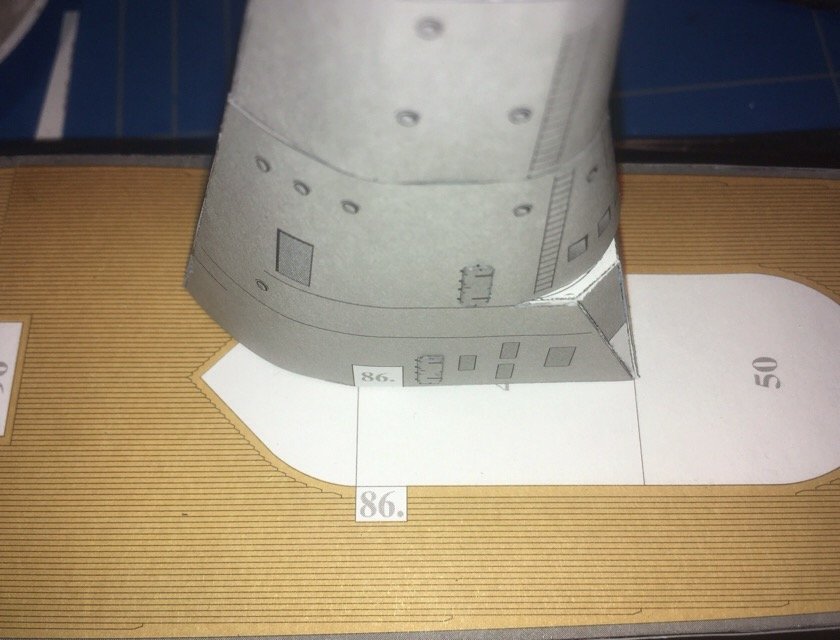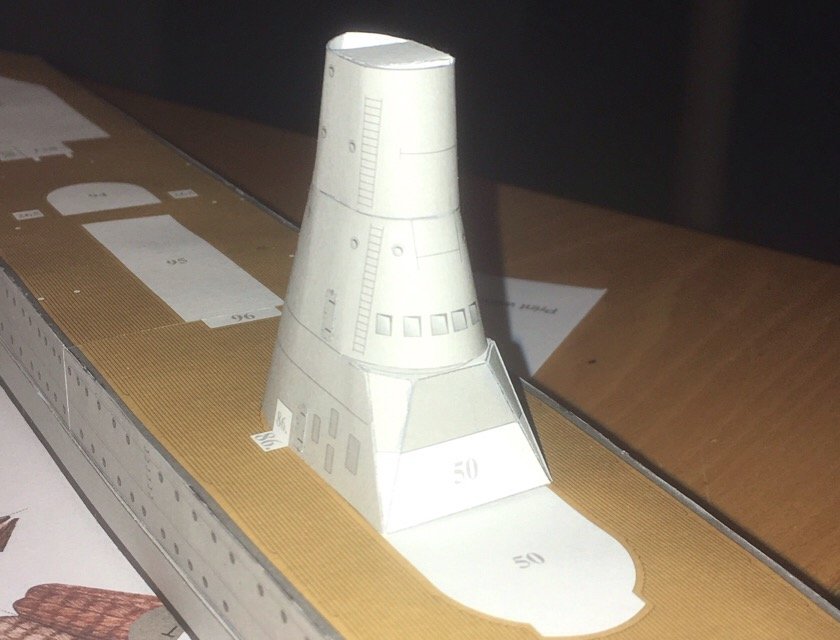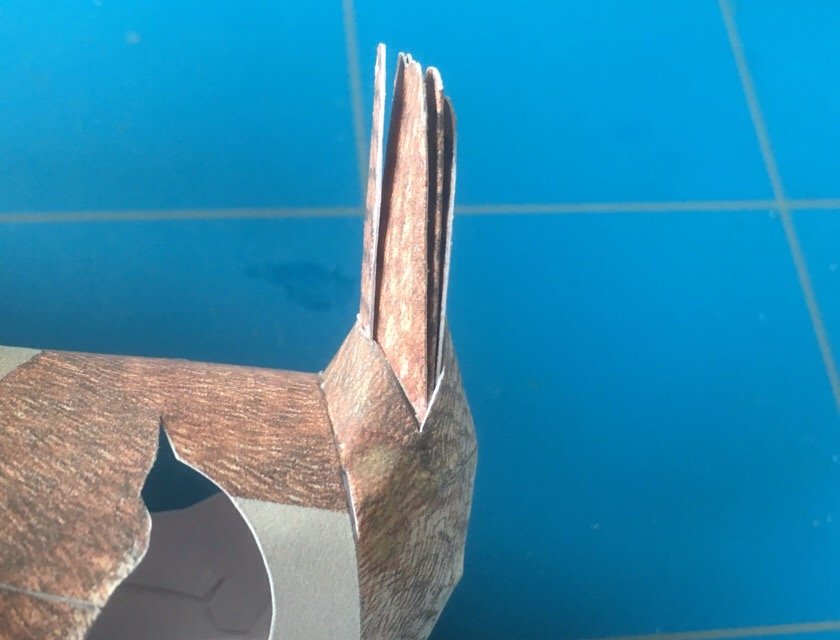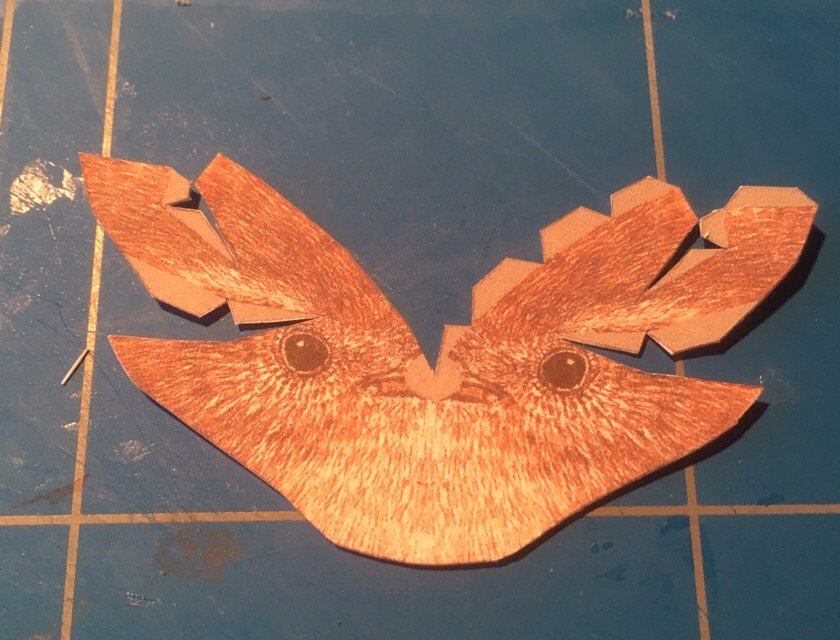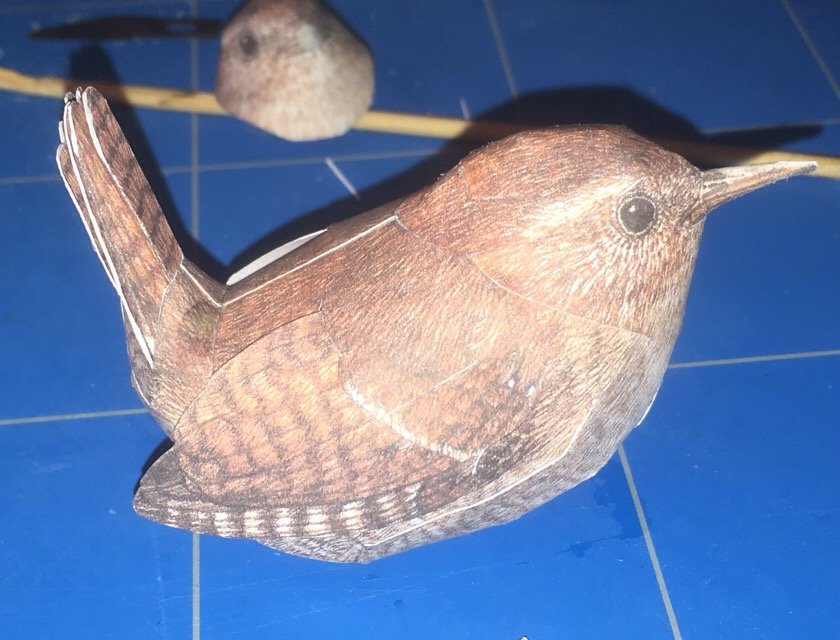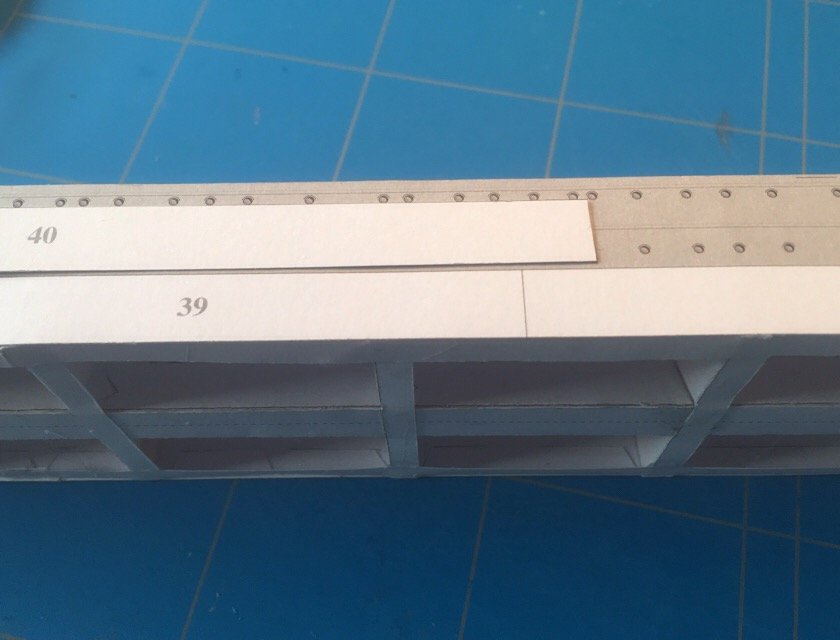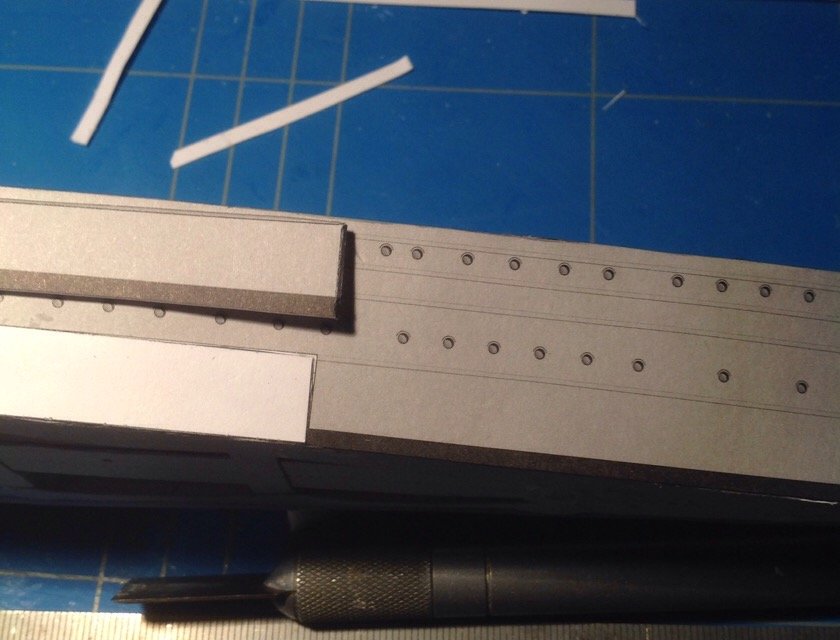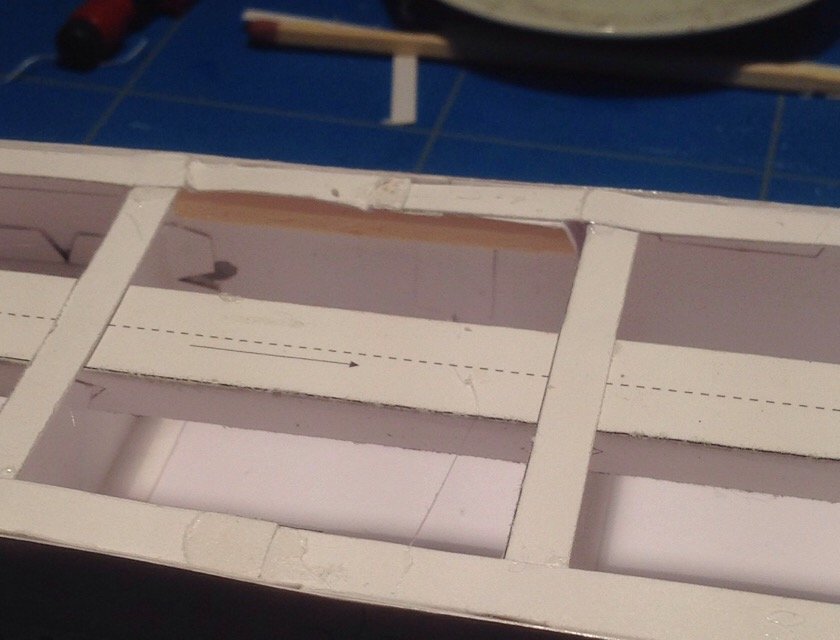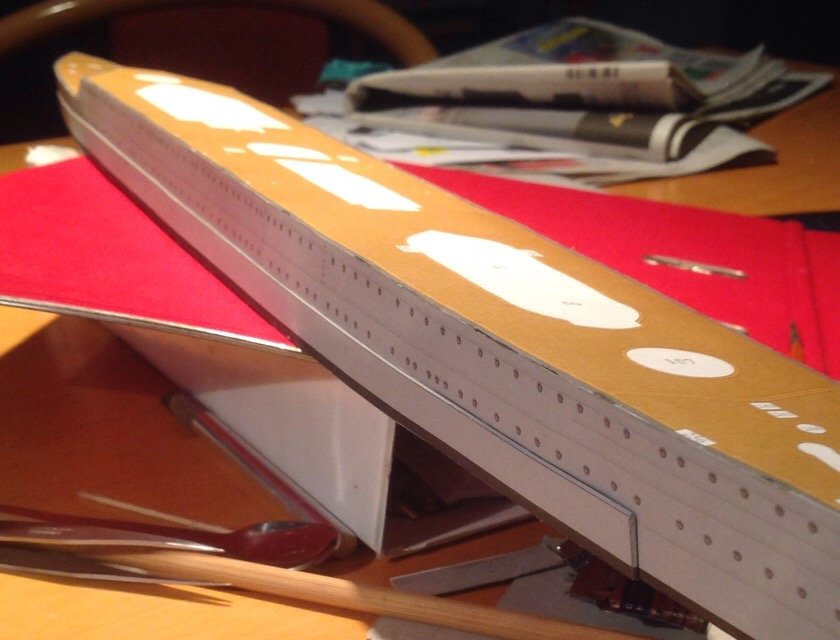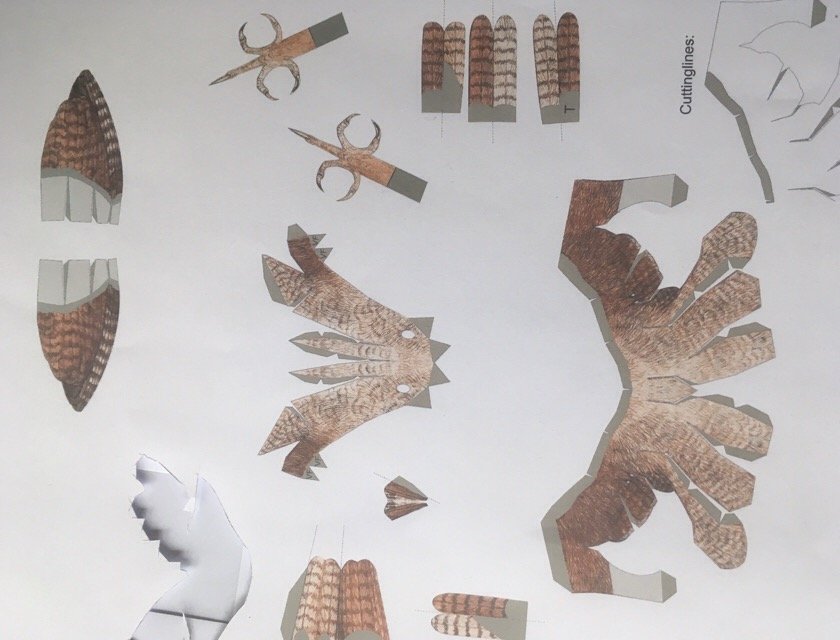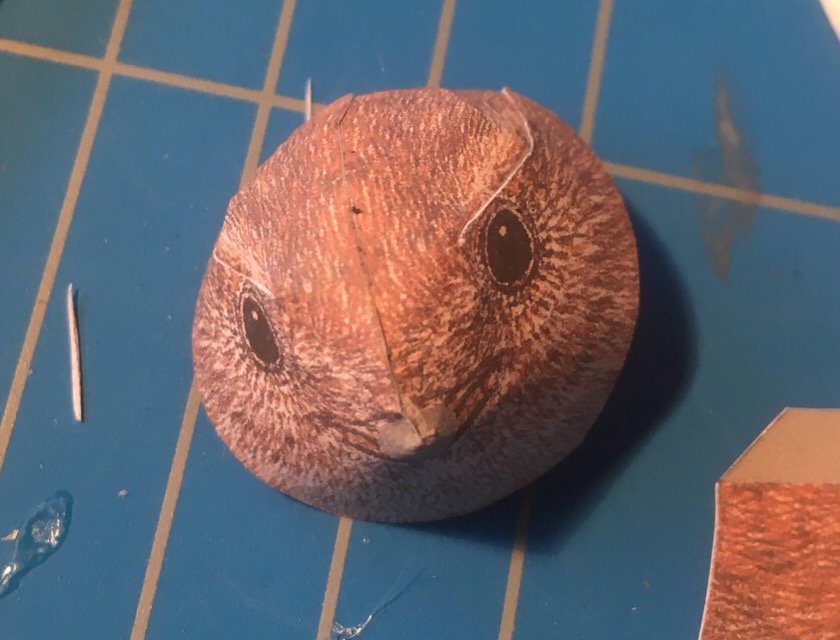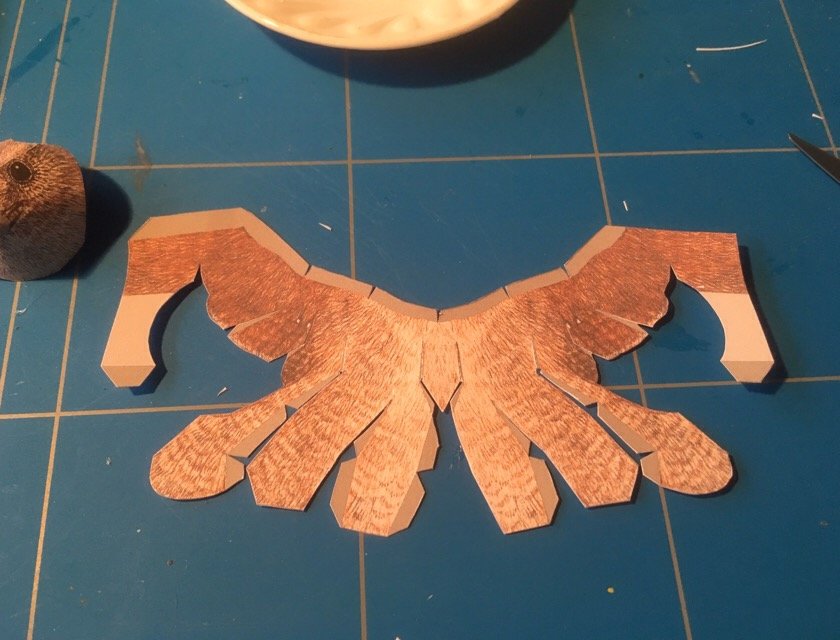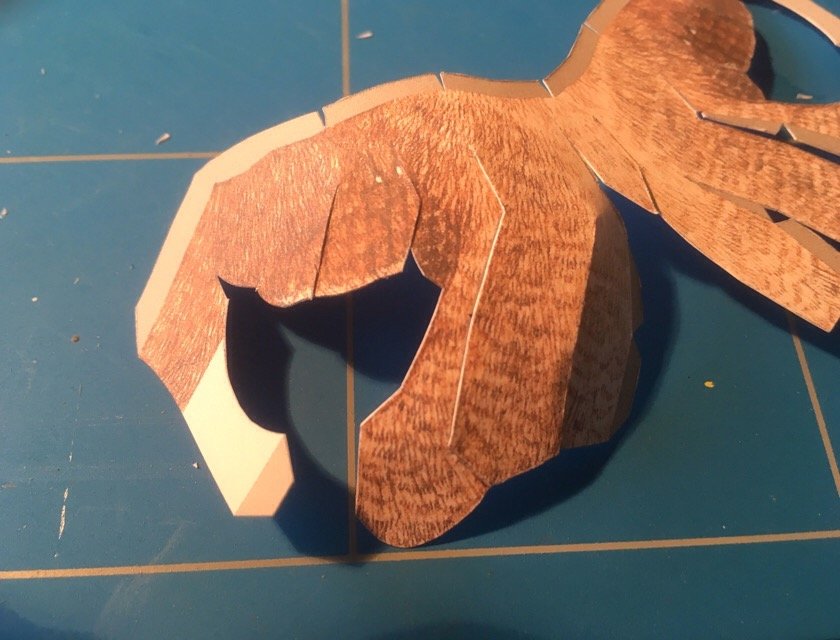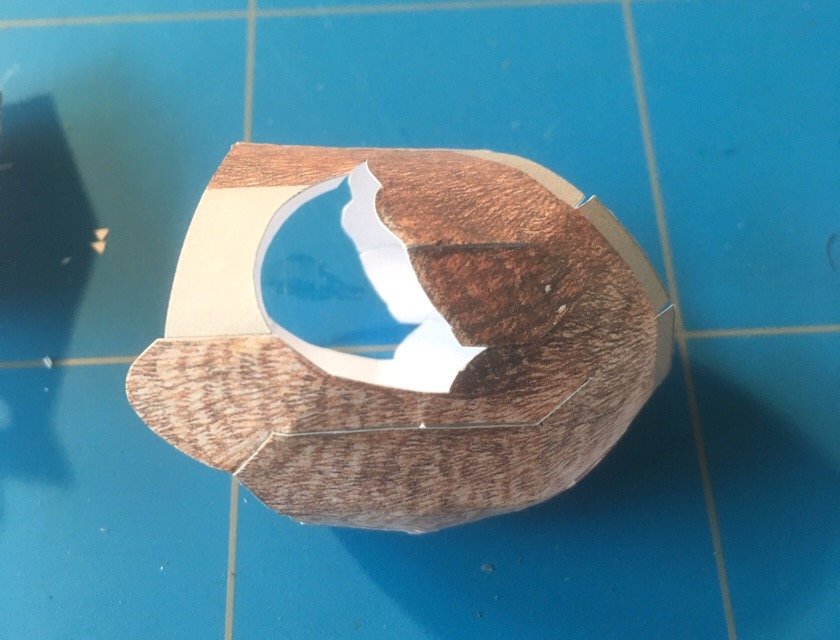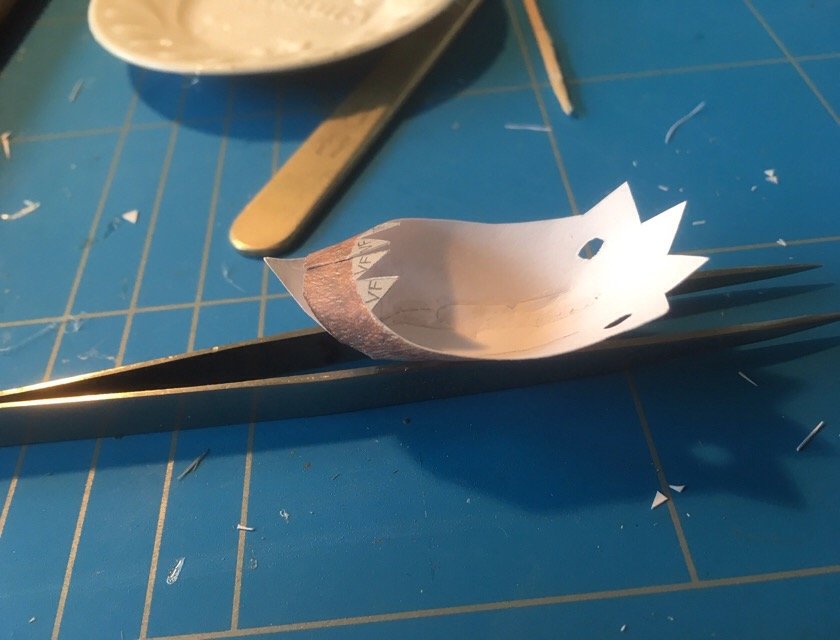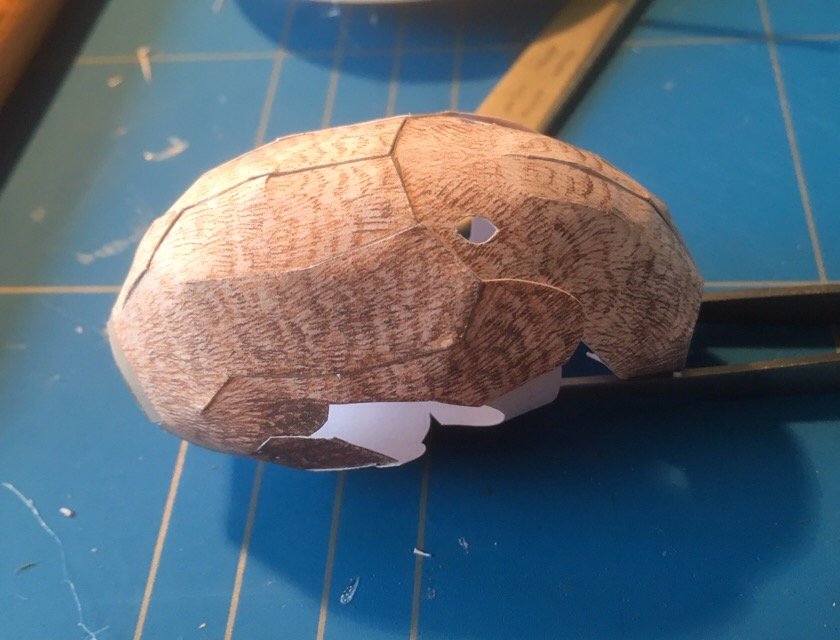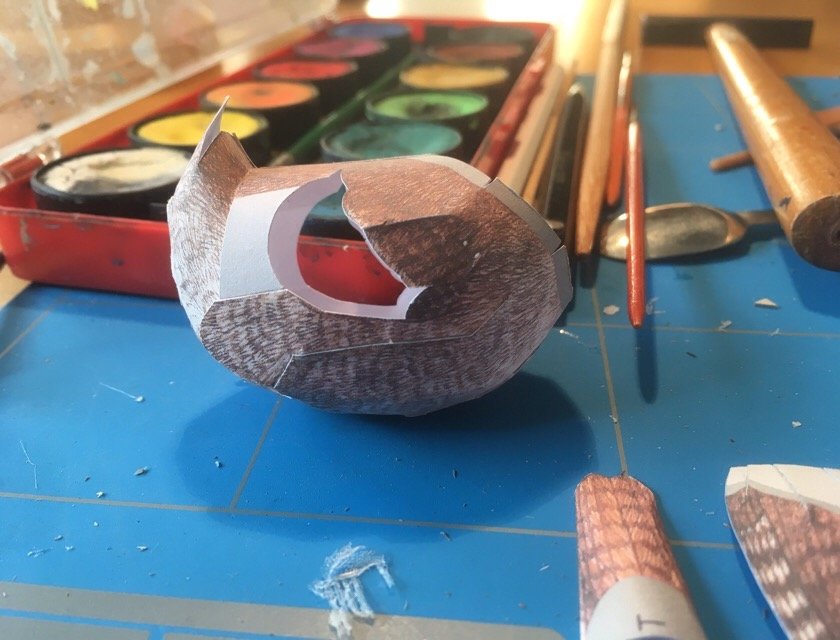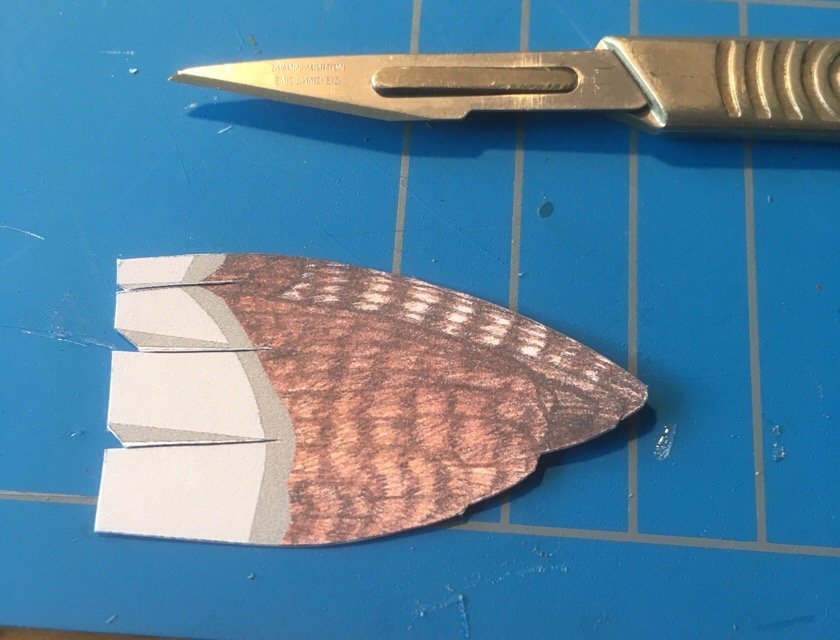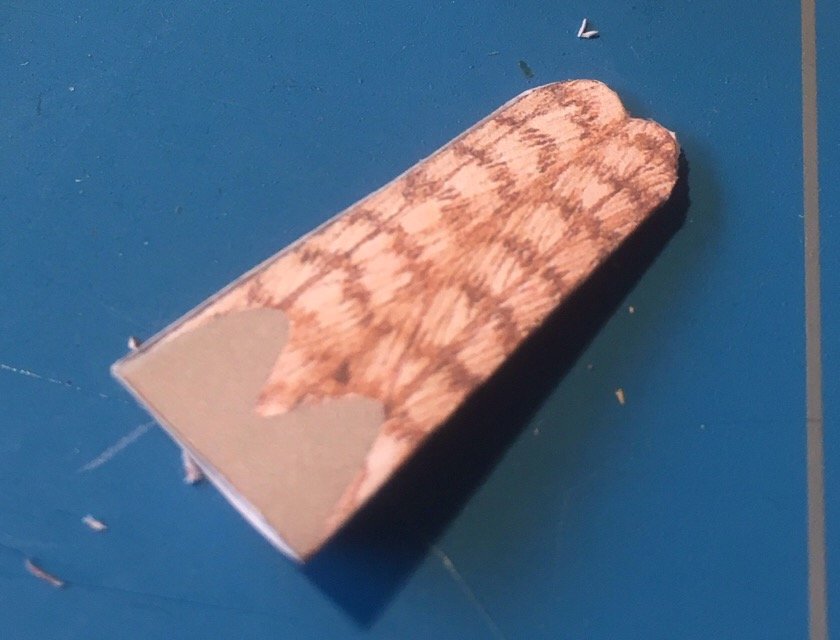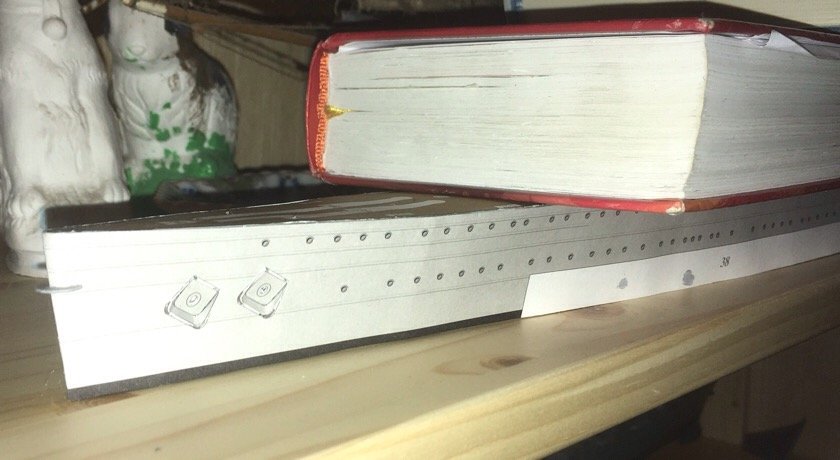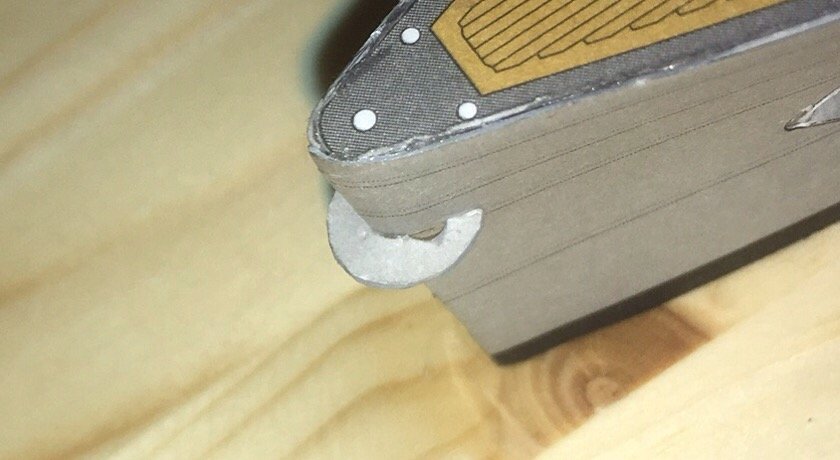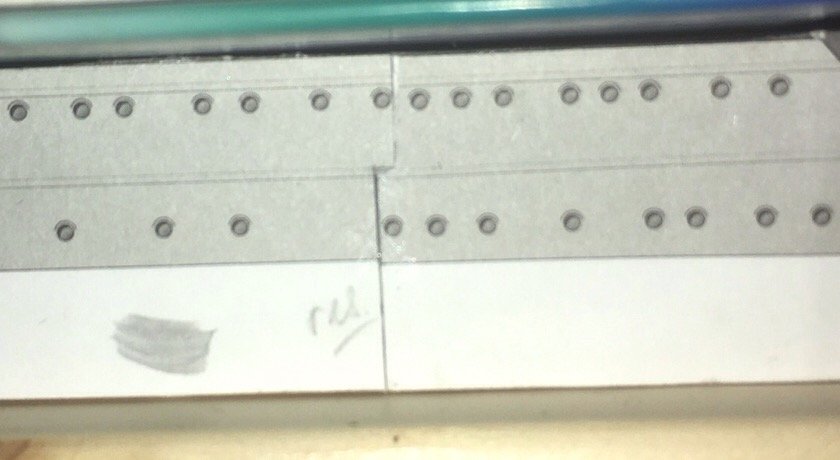-
Posts
3,441 -
Joined
-
Last visited
Content Type
Profiles
Forums
Gallery
Events
Everything posted by amateur
-
And another thing I discovered when I started looking for pics of the real ship: there is hardly any space left between heads and deck. So: I had the wrong impressions of the size of the real ship. Jan
-
Hi, Welcome to MSW (should we call you Intex, or..?) With respect to your questions: I suspect that it is not a kit, but a decorative model. Used to be very popular around the fifties in Europe. Sometimes they were intended to represent a certain type of ship, sometimes they were just a mixture of 'ship-like' details. Your model is (I suspect) from that last category: three masted, rigged with tops, square rigged (but I can't get how the mizzen was rigged.) The hull, however, has clipper and yacht-characteristics, but can by no means represent (scalewise) a sailingship: that hull with three masts will tumble over) The superstructure, has some 'clipper-like' design charactyeristics. So: 1. no Spanish armada for sure. 2. perhaps no one-off, certainly no kit, and if produced in a larger series, probably the last surviving 3. I guess, but am not an expert: - take pictures of all stages of your work (try to get as much detail on the rigging you can still get before taking it apart) - try to take the whole thing apart (especially the damaged parts without using brute force) - clean the parts and repair (not overpainting, but filling in the missing parts) - put everything back together. The other route is: try to put everything together without taking apart, and fill in the missing gaps. The result will be a very nice decorative model with a story. Not a museum quality ship model. Jan
-
Yep, I did what all beginners do: follow the manual: Glue part to deck, next build the forward structure, glue to deck, adjust the connecting tabs and glue. As the deck isn't completely flat, the very slight pressure of my fingers was enough for the gap to hide. Once the parts were glued together, it showed its real size..... I have some spare grey, so I will check what I can do. Not before next weekend, though.... Jan
-
It surprised me how many pics of Java and De Ruyter exist, compared to all ships before and after those two. Same for the subs build in that same period. must be the combination of the building of major ships, and the rise of (cheaper) photography. Jan
- 378 replies
-
- java
- pacific crossroads
-
(and 2 more)
Tagged with:
-
After some contemplating (at work, shouldn't do that ) I discovered what the problem is: the conning tower is slightly too wide, and that also applies to that forward structure. But I tried to get the forward building into the white area painted on the deck. That makes the wall slightly non-vertical, resulting in a gap on the upper side. Have to think whether a total repair does more harm than good, compared to the fix (version 2) Danny described above. (Quite a lot of tabs on the underside ) Jan
-
The ship had a wooden deck, so painting it 'wood colour' is not a bad idea (and like the pics that Piet showed, this one is also available through maritiemdigitaal, unfortunatedly, al those pics are only low-res.....) Jan
- 378 replies
-
- java
- pacific crossroads
-
(and 2 more)
Tagged with:
-
Hi Dan, I contemplated option 2, but discarded it for several reasons. 1 the deck ontop of the forward building fits very nice against the conning tower, it would make a large adaptionto get that one fixed, and Idon’t know the margins there: on this deck a gun will be mounted. 2 despite the small misalignment in the sides (apart from the whole constructionbeing too wide), the margin I have lenghtwise is smaller than the gap. Shortening will create another problem. 3 the gap is more pronounced on this side, and less on the other. So filling it will be. ,(I have some lefftovers from the hull, and a nice square of ‘reserve grey’) Jan
-
Today I did the nxt part of the superstructure. It was not a complete succes, but I don't know where I went wrong. The forward part of the superstructure( on which a gunturret will be installed) consist of a wall, with a false deck. that one posed no problems then a deck is build upon that, with some minor parts below. And no, those didn't fit into their assignd places. Doorst, windows, everuthing is interfering.... But the forward railng did fit quite nicely.. not to Dan's standards, but I am pretty contend with it. but then....it just didn't fit to th main structure.it is 2mm too low (the deck does not cover the white area in front of the main structure, and the horizontal oine should run level around the whole structure. Yeah....tell me where the error is besdes,the 2 mil gap between tower and railing should not be there,. But is is, and it won't go. strange both parts (tower and forward gun position) went together without problem. I guess they didn't pay attendtion enough in their prototype build....) Jan
-

Wren by amateur - FINISHED - 1:1- CARD
amateur replied to amateur's topic in Non-ship/categorised builds
And the finished product, sitting on a paper branch. I hoped to show you the next bird, nut that one didn't suucced (yet). The head didn't fit, and in trying to let it fit, I crushed the body. But I'll restart (next weekend). Here it is before crushing (even before glueing) Jan -

Interesting new model ship company
amateur replied to Erebus and Terror's topic in Wood ship model kits
Pretty sure about that: see what google translate gives as the (pronunciation of) the word 'clone' translated to Japanese sounds pretty much as couronne,. the framing of these kits more resembles the englishdock-yard style (simplified, non structural frames) than the fully frames models that try togive the real structure. I still don't know whether or not I like these all pre-milled kits..... Jan -
Without any deep thinking: could a half tube be made like a profle, from square srock, usung a scraper? Another thought: sometimes plain paper (the thicker version) can be a alternative for PE-parts. Printing card is not too expensive, and by letting the custeromer cut the parts from the paper, you don't have the laser cost and time (and the customer can go to the copyshop for spares )Or are the parts needed too small/complex to make from paper? Jan
-
No , apart from edgepainting, there will be no painting involved. Ah, well, the laser cut cardboard requires some paint Jan
-
Today it was the other side. and guess what: here the white strio was acentimeter too long, but the grey one did fit almost perfectly. JSC is getting me confused next the conning tower is to be build. It is constructed around a blocklike structure (forgot a pic...). Doors are doubled, but all the remainder is just printed (windows, ladders, etc) Again some confusion with the length: that will never fit.... But it does give a nice feeling to have some superstructure Jan
-

Wren by amateur - FINISHED - 1:1- CARD
amateur replied to amateur's topic in Non-ship/categorised builds
Almost finished (but not completely: the bird needs a brach to sit....) First, a tail next, a new head (the first one didn't fit without damaging the body) and finally, the marriage of all parts into a proper bird I took a branch from the garden, but that didn't work: a real bird doesn't need a horizontal branch. This one does..... Jan -
JSC made me almost despair: the hull-design is a bit ricky, as there is no way to check the length of the hull: the deck seemed too long, the hull-skins were definitly too long. The armour belt is made of two layers, the first one wass too long (by exactthe amount of lenght I removed fro. The skin-parts, so that made me think.... what if.... One hour of thinking and trimming later, the whole centimeter was down to a three milimeter the problem of this layer over layer, is that the hull gets a bit 'wavering': the hull skin tends to bend inward between the frames. So I cheated a bit to get the thing straight again: matchsticks do wonders. and so the beast has its starboard-side finished. and no, I am ot going to do any PE ladders, windows, eyebrows aboe the windows or anyrhing else. No, I will not go there (not yet, at least...) Jan
-
Hi, as a break (needed something to do while the glue of my other models is setting, I downloaded a cardmodel of a bird, a wren to be exact. (Www.johanscherft.nl). rather fun to build, and not difficult at all. The result is rather convincing: a life size bird, 16 parts, just from your own printer. I will just show the pics, no story needed (I think) to the 'kit'. I printed it on 120 grams paper, but 80 is better (as it is thinner, the edge problem is smaller, and it will curve more easily. The head: lines on my cutting mat are 1 cm apart the hull in variou stages of forming Start of the tail. The 5 additional feathers are still drying under some weight. Two wings. Flat and curved. There is a beak (somewhere on the grond now, but I willretreive it ) and two legs still to be cutted. Final assamblage will be tomorrow (I think) picture will follow for the gallery (untill the moderators remove it, as a wren is not a ship at all) Jan
-
As Pat says: nice and subtle. I don't like those heavily weathered ships (even though technically rather perfect). Looks too much like a ship on her way to the scrap-yard in my opinion. Jan
-
Not the type of story to hit the like-button. But thanks for telling. Jan
- 378 replies
-
- java
- pacific crossroads
-
(and 2 more)
Tagged with:
-
Today I finally had some hours to get the hull closed. Took me the better part of two hours. On this side, I needed some tweeking to get the middle part in the correct length: the cut had to go through a porthole, and that didn't seem a good idea. So, a non straight cut was used. finally someweight on to to get thehull a bit straightened (it tends to curve down at the ends) The little round part at the bow is also attached (still don't know what it is for) Jan
-
Bit of a hijack of thi sthread, but in a answer to a question to a POF-version of the BOeier. A boeier of that age had a builing style related to the Dutch 'bottom first' method. There is no complete set of frames that was erected before starting the hull. Framing was done along the route, fitting some planks to the frames, fitting the next frames to the planks. Therefore, not all the frames can be attached to the keel from the start. A POF-build sequence will be kind of fictitious. And: of all dutch bows, the boeier one is notorious for its difficult curves (the planks curves strongly upward, and slightly inward to the stern. Even more experiences builders cry for fillers in bow and stern. Easier to do with POB, especially while this boeier is clinked build, and not carvel. To illustrate: even at the turn of the twentieth century, some builders of the smaller boeiers used this 'frameless' building style. And to illustrate the interesting curves, I downloaded a drawing from Maritiemdigitaal (the digital inventory of the Dutch maritime musea) showing a drawing of a Amsterdam build Boeier (around 1850). Clinked build, looking very much (but not completely) like the boeier Chuck showed (this one has no wales, and a much stronger sheer (which I personaly like very much in this drawing) You can see the relatively flat build bottom on which the frames where erected. You can also see the Dutch style of framing the bow using heavy timer attached to the stern, and not the keel, and you can see the inward/upward curve of the planking at the bow. The drawing also shows part of the interior. I guess the model of the 'emperors Boeier' shows an even more lavishly decorated interior. (unfortunatedly: there is no easy way to buy copies via this maritiemdigitaal.nl-site....., and the pic below is the highest resolution you can download ) Jan And I don't know how this one relates to the model Chuck showed: an undated drawing of a Boeier from the Dutch Naval archive (indicating that the ship must have been build at the Rijkswerf, like the original of the model). Drawing is available (for non-commercial uses) at high resolution here: http://proxy.handle.net/10648/01dc8ced-b82f-885d-38eb-b86fff990f2e Jan
-
I understand the decision. but believe me, I'm a bit disappointed by it. Smaller working boats, not coming from the US or the UK are rarely be found in kit-form (and certainly not in a decent quality kit). I do understand that kit-makers have to choose a subject for which a potentially large market exist, but one way or the other, that always seems to result in a kit of an "HMS something" with a certain number of guns. I'm simply not interested in any HMS-something..... Jan
About us
Modelshipworld - Advancing Ship Modeling through Research
SSL Secured
Your security is important for us so this Website is SSL-Secured
NRG Mailing Address
Nautical Research Guild
237 South Lincoln Street
Westmont IL, 60559-1917
Model Ship World ® and the MSW logo are Registered Trademarks, and belong to the Nautical Research Guild (United States Patent and Trademark Office: No. 6,929,264 & No. 6,929,274, registered Dec. 20, 2022)
Helpful Links
About the NRG
If you enjoy building ship models that are historically accurate as well as beautiful, then The Nautical Research Guild (NRG) is just right for you.
The Guild is a non-profit educational organization whose mission is to “Advance Ship Modeling Through Research”. We provide support to our members in their efforts to raise the quality of their model ships.
The Nautical Research Guild has published our world-renowned quarterly magazine, The Nautical Research Journal, since 1955. The pages of the Journal are full of articles by accomplished ship modelers who show you how they create those exquisite details on their models, and by maritime historians who show you the correct details to build. The Journal is available in both print and digital editions. Go to the NRG web site (www.thenrg.org) to download a complimentary digital copy of the Journal. The NRG also publishes plan sets, books and compilations of back issues of the Journal and the former Ships in Scale and Model Ship Builder magazines.



